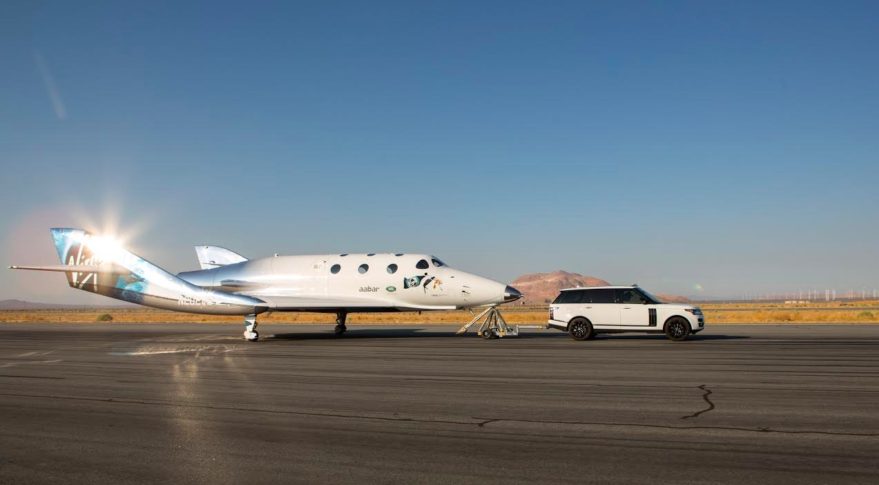Virgin Galactic Receives FAA License for SpaceShipTwo Tests

WASHINGTON — As Virgin Galactic prepares to resume testing of its SpaceShipTwo suborbital spaceplane, the company announced Aug. 1 that it has received a launch license for those tests from the U.S. Federal Aviation Administration.
The license, dated July 29, covers test flights of SpaceShipTwo from the Mojave Air and Space Port in California over a two-year period. On those tests, SpaceShipTwo is carried aloft by its carrier aircraft, WhiteKnightTwo, from which it is released and fires its hybrid rocket engine for a suborbital flight, gliding back to a runway landing.
While Virgin Galactic ultimately plans to use SpaceShipTwo to carry space tourists, the license awarded by the FAA restricts the company to transporting only "non-deployed scientific, experimental, or inert payloads" on flights carried out under the license. [Virgin Galactic's VSS Unity SpaceShipTwo in Pictures]
The license prohibits Virgin Galactic from flying what are officially classified as "spaceflight participants" on SpaceShipTwo until the company can “successfully verify the integrated performance” of SpaceShipTwo and WhiteKnightTwo. "Verification must include flight testing, and the results must be provided to the FAA prior to conducting a mission with a space flight participant on board," the license states.
Virgin Galactic opted to receive the launch license, with those restrictions, over an alternative known as an experimental permit. Such permits allow for testing of suborbital reusable launch vehicles under a more streamlined regulatory environment, but prohibit the company holding the permit from using the vehicle for any commercial application. Blue Origin, for example, has an experimental permit for test flights of its New Shepard suborbital vehicle.
Scaled Composites, the company that developed the first SpaceShipTwo for Virgin Galactic, had an experimental permit from the FAA for its test flights. Prior to the October 2014 crash on a test flight that destroyed the vehicle and killed its co-pilot, Scaled planned to carry out a series of such flights before handing the vehicle over to Virgin Galactic, which had applied for a launch license for commercial SpaceShipTwo flights.
Virgin Galactic spokeswoman Michelle Mendiola said Aug. 1 that Virgin Galactic decided it did not need the experimental permit for its test flights. "Basically Virgin Galactic didn't need to go through two separate applications," she said. "Ultimately, licenses — which require providing more data and more insight to the FAAin order to obtain — are required for a company to conduct commercial service."
Get the Space.com Newsletter
Breaking space news, the latest updates on rocket launches, skywatching events and more!
One advantage of the launch license is that it would allow Virgin Galactic to fly payloads, such as experiments, for hire before the start of full-fledged commercial operations. Speaking at the Next-Generation Suborbital Researchers Conference in Colorado in June, Will Pomerantz, vice president of Virgin Galactic, said the company was considering flying "pathfinder" payloads on SpaceShipTwo test flights, although it wasn't clear of those payloads would generate revenue.
The announcement of the launch license came the same day as Virgin Galactic said it was beginning ground tests of the second SpaceShipTwo, known as VSS Unity. The vehicle performed its first taxi test, towed outside its hangar to "evaluate and calibrate the navigation and communications/telemetry systems," according to a company statement.
"The granting of our operator license is an important milestone for Virgin Galactic, as is our first taxi test for our new spaceship," Mike Moses, senior vice president of operations for Virgin Galactic said in the statement. "While we still have much work ahead to fully test this spaceship in flight, I am confident that our world-class team is up to the challenge."
Virgin Galactic has previously indicated that testing of the second SpaceShipTwo will follow the approach used for the first vehicle, with taxi tests followed by "captive carry" flights, where SpaceShipTwo is carried aloft by WhiteKnightTwo but not released. Glide flights, where SpaceShipTwo is released but does not ignite its engine, will follow before full-fledged powered test flights of the spaceplane. The company has not indicated how many test flights, over how long a period, it anticipates will be required before beginning regular commercial service.
This story was provided by SpaceNews, dedicated to covering all aspects of the space industry.
Join our Space Forums to keep talking space on the latest missions, night sky and more! And if you have a news tip, correction or comment, let us know at: community@space.com.

Jeff Foust is a Senior Staff Writer at SpaceNews, a space industry news magazine and website, where he writes about space policy, commercial spaceflight and other aerospace industry topics. Jeff has a Ph.D. in planetary sciences from the Massachusetts Institute of Technology and earned a bachelor's degree in geophysics and planetary science from the California Institute of Technology. You can see Jeff's latest projects by following him on Twitter.
Most Popular

